For the French, a métier is the pinnacle of artistry. The art of craft and the mastery of skill is coveted in this country that is the birthplace of haute couture. For Chanel, a House that is so embedded in the rich history of French fashion, the métier is revered even more, because it is the foundation that built this Maison—brick by brick, stitch by stitch. The 19th arrondissement of Paris is known for its affiliation to the arts—home to the Philharmonie de Paris, the Cité des Sciences et de l’Industrie, Europe’s biggest science museum, and the Parc de la Villette, the cultural and artistic epicentre of the city. Today, an impressive façade adds to the 19th’s artistic vibe as it is chosen as the home of Chanel’s architectural tour de force, le19M.
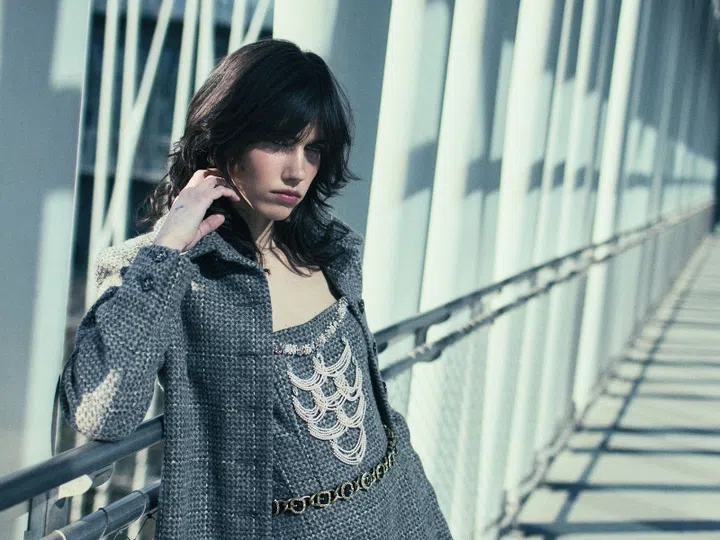
Jacket; dress; belt, Chanel.
Photo: Stepan Filenko
Out of Paris’ 20 arrondissements, choosing the 19th, in part, is a homage to Gabrielle Chanel’s birth date, and also because of the artists in residence who populate the area—something that will make their artisans feel right at home. Designed to bring together 11 Maisons d’art in a single space, le19M is as impressive outside as it is in. “The architectural narrative behind the construction of this building echoes, somehow, what the art and craft of fashion is,” says Rudy Ricciotti, the famed Grand Prix d’Architecture winner and overall creator of this behemoth of a building. “You see the threads are present. The building evokes a certain vision of haute couture, which brings out the several skills of creative partners working together. Each one brings knowledge.” Covering 25,500 square metres, le19M provides a central workspace for 11 Maisons: Atelier Montex, Desrues Parurier de l’exception, Goossens, Lemarié, Lesage, Lesage Interieurs, Les Ateliers Lognon, Maison Michel, Massaro, Paloma and Studio MTX Broderie Architecturale. A community of nearly 700 artisans and experts come here every day to collaborate, to converse and ultimately, to create.
Flowers and Fabrics
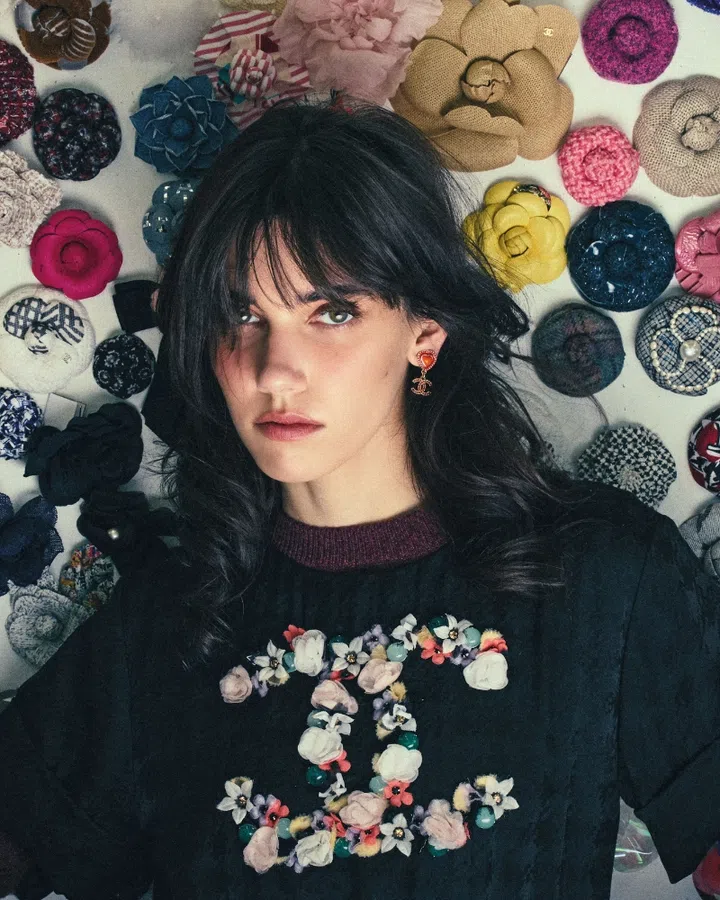
Top; earring, Chanel.
Photo: Stepan Filenko
At le19M, creation is a continuing conversation that starts with Chanel creative director Virginie Viard’s vision, passed on to the artisans and brought into fruition through their own métier. At Lemarié, needlework, featherwork and the crafting of fabric flowers are elevated to an art form. All the beautiful buttons and brooches, shaped like a camellias, Chanel’s iconic flower, are made by the artisans here—all by hand and with exacting detail. “Lemarié has a great history,” shares artistic director Christelle Kocher. “It was founded in 1880 by Palmyre Coyette, working mainly with feathers. In 1946, her grandson joined the company and started crafting flowers. To this day, Maison Lemarié continues to work with the greatest names in couture and ready-to-wear.”
Related article: BAZAAR’s Kenneth Goh And Windy Aulia Reflect On Virginie Viard’s Chanel
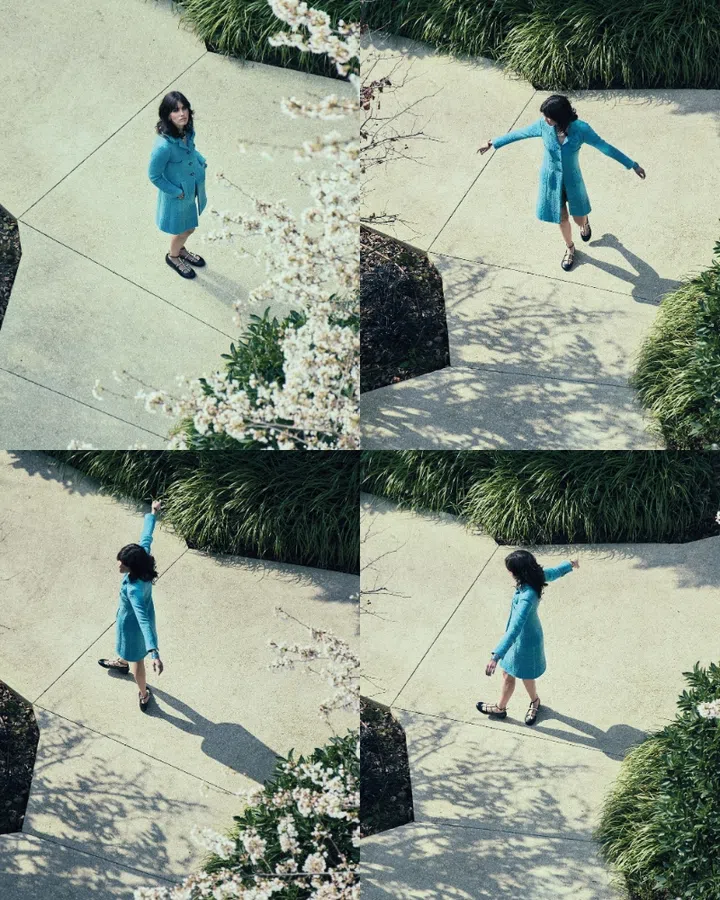
Coatdress; knickers; bracelets; flats, Chanel.
Photo: Stepan Filenko
Working with a combination of classic and contemporary materials, such as rhodoid and silk, Kocher is challenged by mixing traditional craftsmanship with innovative techniques—where laser printing goes hand in hand with the artisan’s skill. It is an intricate process, using irons that date back to 1880 (needless to say, the archives in this building are priceless), the fabric is coated and cut into shape by a machine, then left to the hand of the artisan who uses a technique to curve each petal and bring it to life. “It took us 80 hours to create this single piece,” Valérie Buscaja, a feather worker at Lemarié says, showing a feathered piece of fabric that will eventually be the collar of a coat. The marabou and ostrich feathers are stitched together using a sewing machine and a handheld tool—simple instruments that create an exceptional piece.
Needle and Thread
“An haute couture collection without embroidery is like a 14th of July without fireworks.” This is how François Lesage described the importance of embroidery in fashion, which continues to be the raison d’être, or reason-for-being, for Maison Lesage. “Lesage embroidery is something that is all at once amazing and emotional, an artistic representation of feeling,” says the Maison’s artistic director Hubert Barrèrre. “In 1983, Karl Lagerfeld arrived at Chanel and, obviously, Lesage immediately started working with him. An uninterrupted collaboration that exists until now because, naturally, Maison Lesage joined Chanel’s Métiers d’art in 2002.”
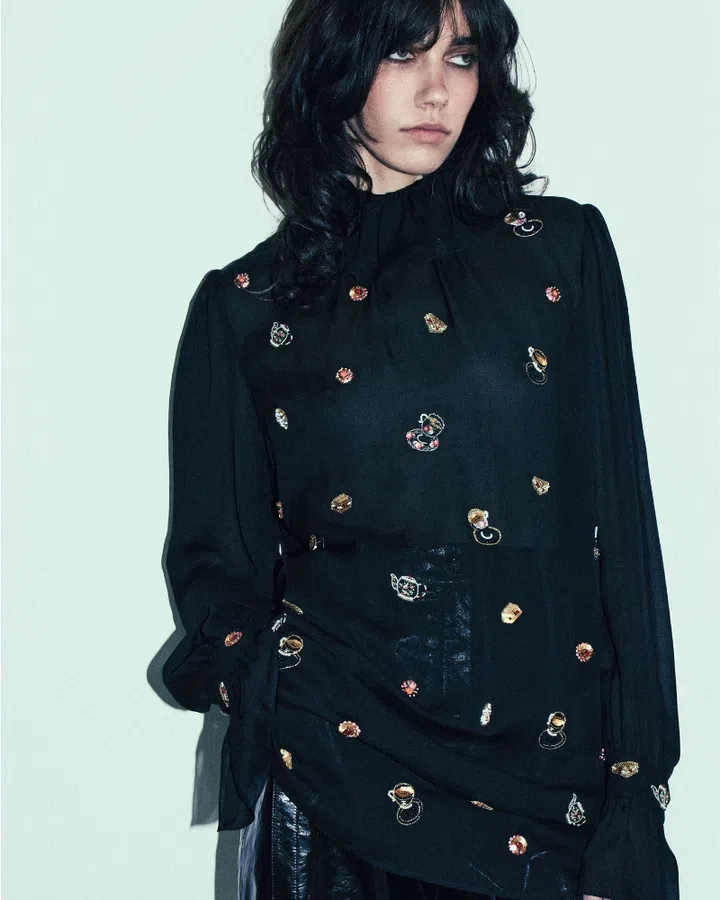
Tunic; culotte, Chanel.
Photo: Stepan Filenko
At Lesage’s workspace, the walls are lined with floor to ceiling boxes that keep the Maison’s precious archives. The history of fashion as told in swatches of embroidered fabric, all in one room. Continuing this narrative, you see the artisans working, handling the needle and thread with expert precision, creating the details that will make the next collection unique. “For the Chanel Métiers d’art Manchester collection, it started by knowing Virginie’s vision, what she wanted to express,” Barrèrre shares. “For Manchester, we asked what it evokes, and it was a ping-pong of ideas between Virginie and what I proposed. Then we develop the idea together, I go to the atelier and work with the embroiderer for us to propose samples that will nourish the creations of Virginie through what we create at Lesage. It is a lot of work, we have 10 collections per year and only 10 days to create for each collection.”
Related article: A Contrast Of Grit And Elegance At Chanel’s 2023/24 Métiers d’Art Show In Manchester
The Goldsmiths

Coat; dress; necklaces; bracelets, Chanel.
Photo: Stepan Filenko
When visiting le19M, it’s difficult to keep your hands to yourself—the textures and colours that surround you are overwhelming. The temptation to inspect every button, every drawer and sewing table is hard to resist. More so at Maison Goossens, the goldsmiths of the building. Founded in 1950 by Robert Goossens, the Maison caught the eye of Gabrielle Chanel because of its unique, baroque touch. “The history of the Maison started with the couturiers, and mainly with Mademoiselle Chanel,” recalls Patrick Goossens, son of the founder. “Together, they played with the codes of jewellery, between real and fake, between precious stones, glass paste and rock crystal.” At Goossens, creating a jewel starts with a drawing, a sketch or any kind of idea and then it’s done 100 percent by hand. There are craftsmen who handle the liquid metal, the jewellers who weld the pieces together, the polishers and the finishers working all together in a symphony of creation that continues to inspire awe even after 70 years. “I arrived at Maison Goossens in 1992 and I had the opportunity to work with both Robert and Patrick Goossens… to learn this métier with all their codes,” shares one of the Maison’s artisans. “I had the chance to work with several Maisons to enrich my skills and now, I have the same opportunity to pass this on to the younger generation and teach them how working by hand is very important in life.”
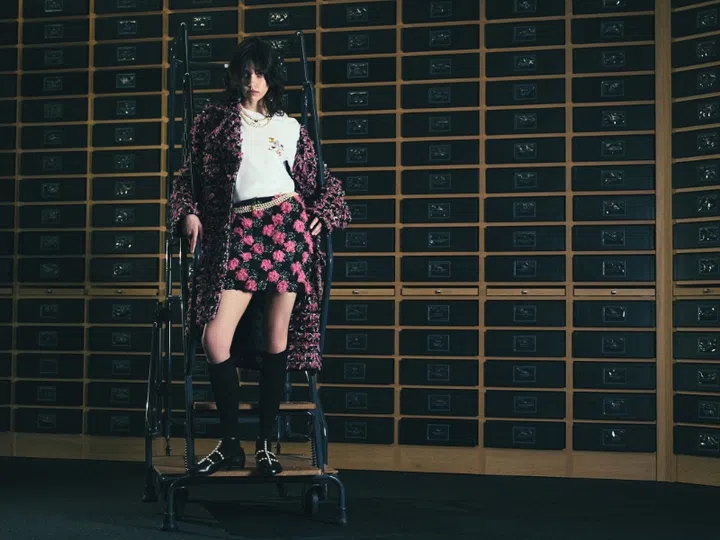
Coat; t-shirt; skirt; necklaces; belt; socks; flats, Chanel.
Photo: Stepan Filenko
Going through each Maison—Lemarié, Lesage, Goossens etc—their stories are linked by the same threads. Very much like the threads that decorate the façade of the building. Origin stories that speak of a passion for craft, a love for learning and the development of skill that is passed on from one generation to the next. This, after all, is one of Chanel’s missions, realised through le19M. In as much as Gabrielle Chanel’s vision and aesthetic surpassed her time, this convergence of Maisons d’art ensures that the House’s codes, values and working ethos live on—transcending time, trend and generation.
Editor-in-Chief: Kenneth Goh
Creative Director: Windy Aulia
Digital Director: Annabelle Fernandez
Video and Photo Production: F2MAX
Creative Producer: Maxim Sapozhnikov
Photographer: Stepan Filenko
Director of Photography: Artem Sadovnikov
Model: Amanda Hackman
General Producer: Viktoryia Niadzelka
Local Producer: Paola Guzman
Hairstylist and Makeup Artist: Lena Yasenkova
Hair and Makeup Assistants: Lozhnikova Eliza, Yagofarova Regina
Stylist’s Assistant: Alexandra Osina
Gaffer: Timur Iskakov
Sound Assistant: Polina Talanova
Translator: Sandra Cameron
Shot on location at le19m
